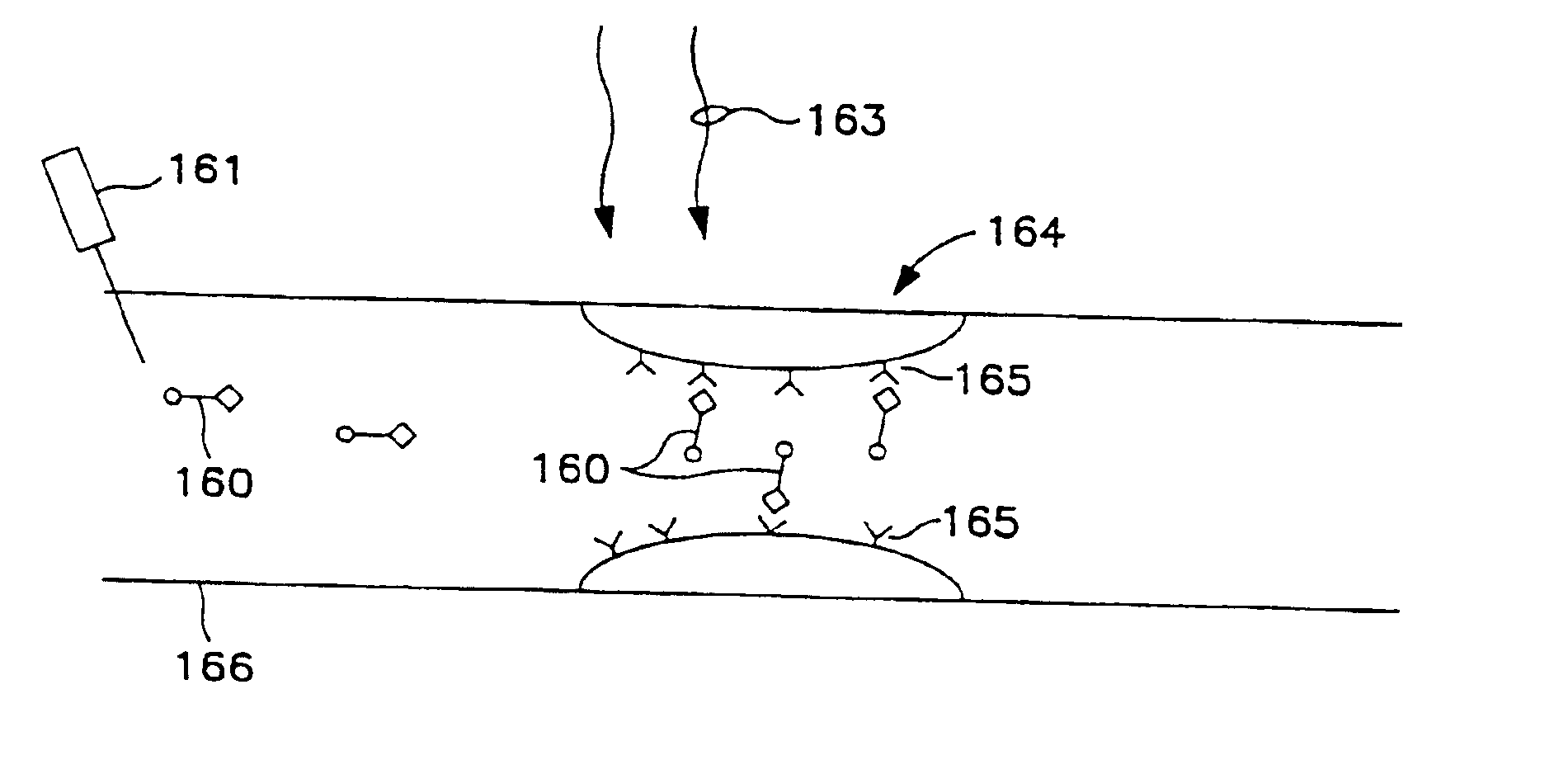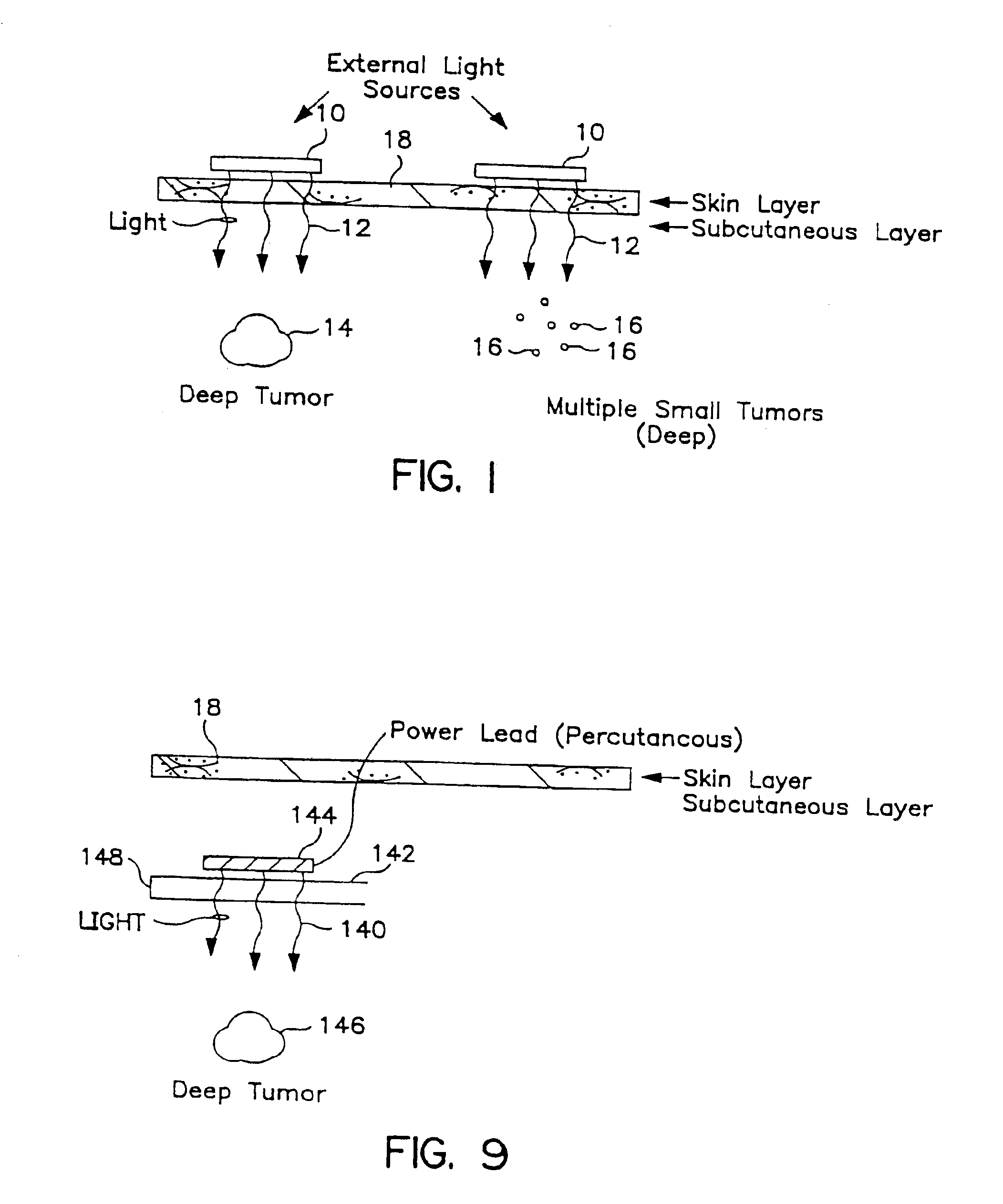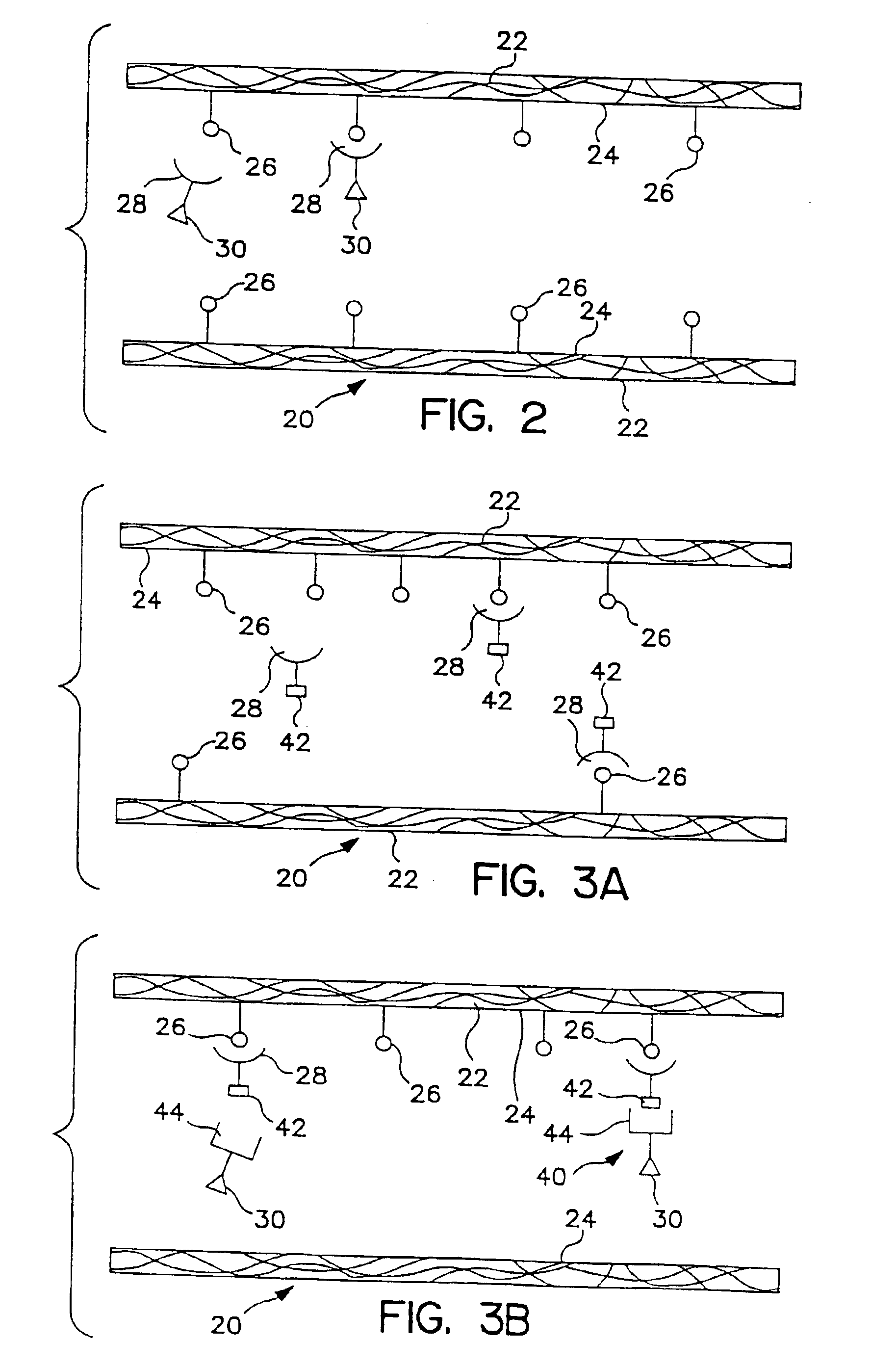Transcutaneous photodynamic treatment of targeted cells
a targeted cell and photodynamic technology, applied in the direction of extracellular fluid disorder, immunological disorders, therapy, etc., can solve the problems of inadvertent skin damage, large number of publications describing appropriate light sources and the effect of transcutaneous light delivery on internal treatment sites within a patient's body, and inability to achieve the effect of pd
- Summary
- Abstract
- Description
- Claims
- Application Information
AI Technical Summary
Benefits of technology
Problems solved by technology
Method used
Image
Examples
example 1
Transcutaneous Photodynamic Therapy of a Solid Type Tumor
[0098]A patient in the terminal phase of recurrent malignant colon cancer having undergone chemotherapy and irradiation therapy, presented with a protruding colon carcinoma tumor mass of approximately 500 grams and approximately 13 cm in diameter, which extended through the patient's dermis. Due to the advanced state of the patient's disease and due to the highly vascularized nature of this tumor mass, resection was not feasible. Further, this large tumor mass presented a significant amount of pain and discomfort to the patient, as well as greatly impairing the patient's ability to lie flat.
[0099]Six separate light source probes, each including a linear array of LEDs, were surgically implanted in this large human tumor using standard surgical procedures. A single dose of a photosensitizer agent (aminolevulinic acid (ALA) at 60 mg / kg) was provided by oral administration to the patient. Following a period of five hours to permit...
example 2
Transcutaneous Photodynamic Therapy of Intraosseous Disease
[0104]The current accepted therapy for treating leukemia and other malignant bone marrow diseases employs a systemic treatment utilizing chemotherapy and / or radiotherapy, sometimes followed by a bone marrow transplant. There are significant risks associated with non-discriminative ablative therapies that destroy all marrow elements, including the risks of infections, bleeding diathesis, and other hematological problems.
[0105]There is a definite need for alternative therapies that do not subject patients to procedures which may be risky and which inherently cause pain and suffering. This example is directed to a method of treating intraosseous malignancy that has major advantages over the prior art techniques for treating this disease.
[0106]A targeted antibody-photosensitizer conjugate (APC) is constructed, which binds selectively to antigens present on leukemic cells. This ligand-receptor binding pair or APC is infused intra...
example 3
[0109]Transcutaneous Photodynamic Therapy of Crohn's Disease
[0110]Crohn's disease is a chronic inflammation of the gastrointestinal tract thought to be mediated in large part by dysfunction of CD4+ T cells lining the gut mucosa, especially in the terminal ileum. The current accepted therapy for Crohn's disease provides for surgical removal of the inflamed bowel segment and the use of anti-inflammatory agents, steroids and other immunosuppressive drugs. None of these measures is entirely satisfactory due to surgical risk, recurrence of disease, medication side effects, and refractoriness of the disease. There is a clear need for alternative therapies useful in treating this immune dysfunction that offer greater efficacy and reduced side effects and risk. This Example, details of which are illustrated in FIG. 7, indicates the drug compositions and methodologies useful in accord with the present invention to selectively destroy the dysfunctional cells or inhibit their function. In the ...
PUM
| Property | Measurement | Unit |
|---|---|---|
| time | aaaaa | aaaaa |
| time | aaaaa | aaaaa |
| time | aaaaa | aaaaa |
Abstract
Description
Claims
Application Information
 Login to View More
Login to View More - R&D
- Intellectual Property
- Life Sciences
- Materials
- Tech Scout
- Unparalleled Data Quality
- Higher Quality Content
- 60% Fewer Hallucinations
Browse by: Latest US Patents, China's latest patents, Technical Efficacy Thesaurus, Application Domain, Technology Topic, Popular Technical Reports.
© 2025 PatSnap. All rights reserved.Legal|Privacy policy|Modern Slavery Act Transparency Statement|Sitemap|About US| Contact US: help@patsnap.com



